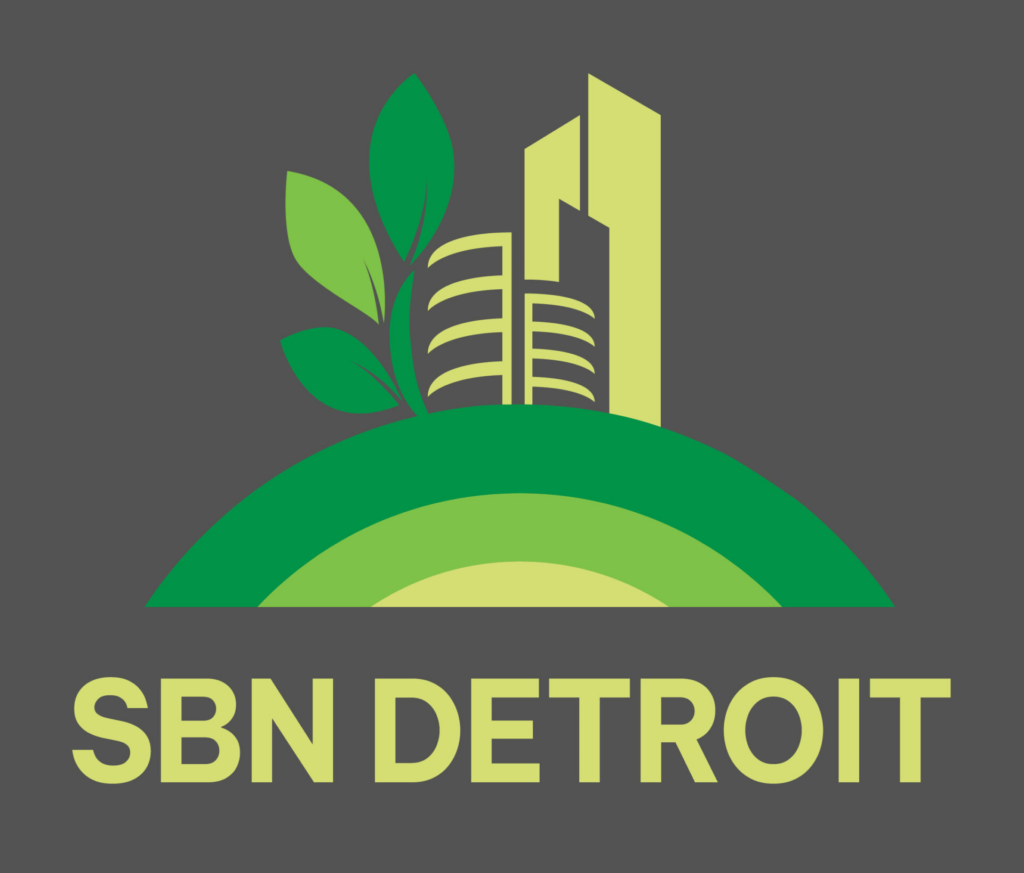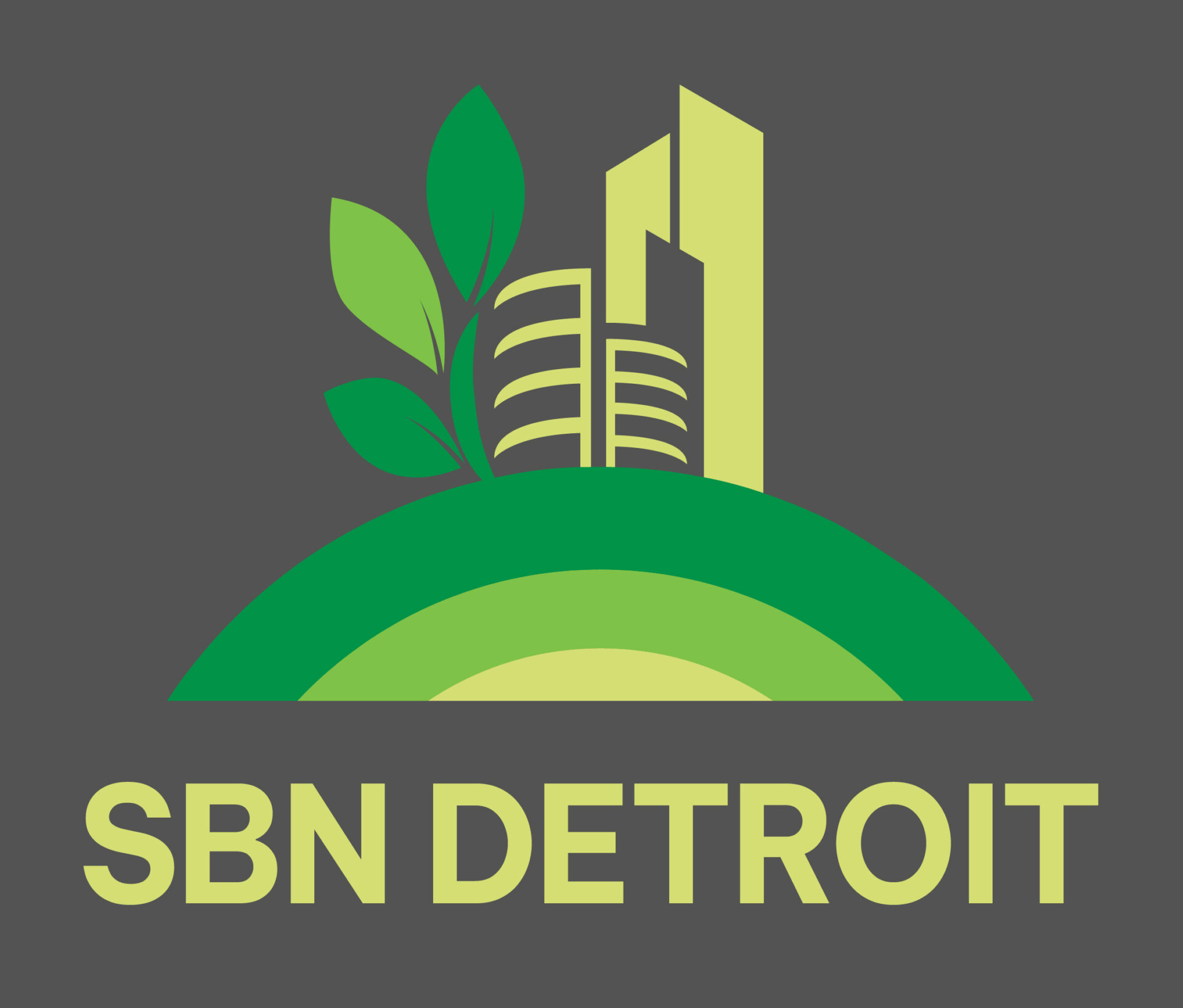Dan Carmody, Eastern Market Partnership CEO, Talks About Building Opportunity, Economy and a Stronger Regional Food System
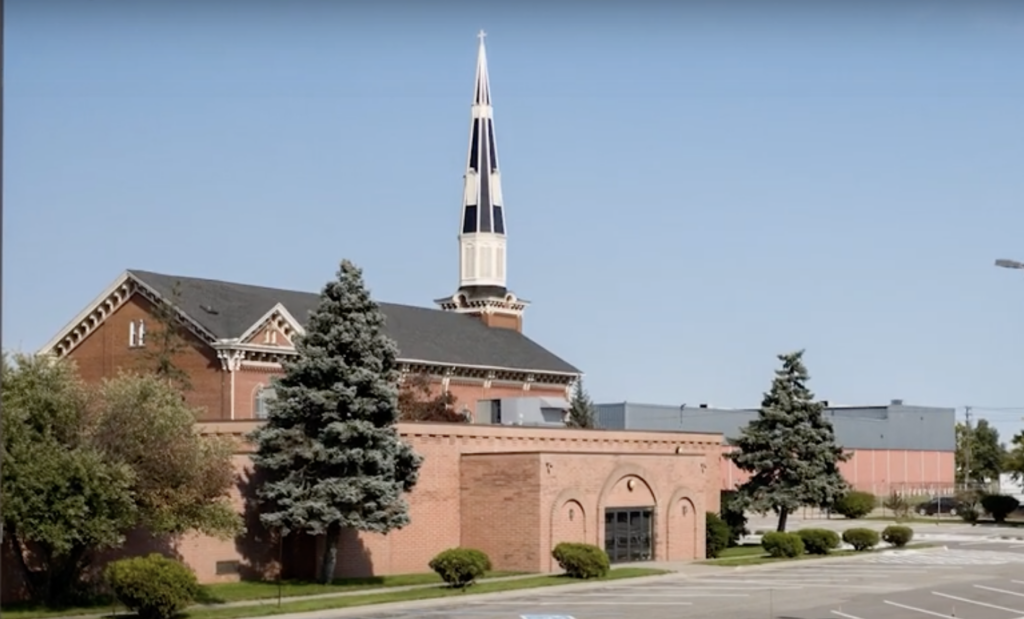
Dan Carmody, Eastern Market Partnership CEO since 2007, spoke with SBN Detroit on the market’s positioning towards sustainable practices. Carmody is responsible for shepherding the 127-year-old, public market to nourish a healthier, wealthier, and happier Detroit. EMP operates one of the largest public markets in the United States, oversees a program of capital investments to rebuild the market, serves as the economic development organization to nurture and expand the Eastern Market District, manages a host of food access programs to improve Detroit diets, and builds an ecosystem to support Detroit food entrepreneurs. Carmody has led Eastern Market to become a national thought leader in developing new templates for how to repurpose urban vacant land and resurrect regional food systems. We talked to Carmody about EMP’s sustainability strategies. Q: Where do EMP’S strengths lie in terms of sustainability? A: Put quite simply, we work to help build a stronger regional food system to make us less reliant on large industrial food systems. There are not enough public markets in the U.S. that serve to support independent small businesses. Public markets are the original “pop up.” Small startups and entrepreneurs can pay the fee to rent a stall or tent and get moving on their business. We need more places like that around the country to help small businesses and not be so dependent on big companies. Q: What does sustainability mean to the market? A: It means that farmers are being compensated for crops in a fashion that allows financial success. It means farmers and growers embracing business practices that help us steward the earth in better ways than we are now. How do you approach partnering with sustainable companies in the food and agriculture industries? A: Two things I can point to that we work on are first, helping to make solar options more viable, and second, helping businesses work stormwater management into their practices to reduce the cost of operation and decrease the amount of stormwater run-off into the Detroit River. Q: How does the addition of these new entities move sustainability forward in Eastern Market? A: The new Mosaic food hall will be located at 3500 Riopelle St. in the former Detroit Water Department building. This building hasn’t been occupied since 1999, so the mere act of utilizing an existing building versus tearing it down and starting over is in itself a very significant sustainable practice. EW Grobbel, who’s been selling corned beef and other foods since the 1970s, will open a new grocery store and deli, creating 300 new jobs and offering local farmers a great venue to sell. These are two great examples of growth occurring now that help move sustainability forward. Q: Looking back eight to ten years, what was your selling point then to bring businesses into the market and also to approach sustainability with them? How has that changed? A: It has not changed much. We look for partners in the food sector and others that build the market as a regional food hub and also improve the business mix for the retail consumer supply and demand. There is an authenticity to the market that has always been there and is still today. Its focus is on independent businesses and if anything, we are becoming more vocal to make sure it remains this way as property values increase. Q What partnerships do you value when it comes to sustainability? A: One that comes to mind is our partnership with The Nature Conservancy in helping businesses design and implement stormwater management systems. This has been going on for several years. We piloted a conversion of a parking lot to retain stormwater at Sacred Heart Church in the Market District that resulted in the reduction of stormwater runoff and reduced their water bills greatly. Throughout our expansion, The Conservancy is helping us as we identify future buildout plans and repurpose urban land for industrial and commercial use to build in stormwater management systems as we go. Q: What can you tell us about the new expansion of the market? A: The expansion involves 25 to 30 acres and a $1 million food processing and distribution space. Again, this will bring new jobs to the Market District, more healthy food options for people in nearby neighborhoods, and vitality and growth to the whole district. Eastern Market has one of the largest footprints of any public market in the country – and we have the space and the means to go bigger. We’ve worked over time to bring in more value-added makers, and now the market is a viable market on Saturday all year and the expansion will strengthen that. From an economic standpoint, we work to offer more opportunities to entrepreneurs to help them grow, and we will continue to do so. We’ve received funding from the state to build what we are referring to as Shed X – a new wholesale distribution facility for regional farmers. Since 1891 farmers have come to the market between midnight and 6 am to sell to independent grocers. This has shrunk over the years and we are down to about 40 million pounds per year. This is not small, but it’s also not big in terms of food distribution. We hope to grow this by building a new, modern facility with refrigeration and docks that the farmers can more efficiently use. We’ll utilize solar lighting and stormwater management within this facility. All of this will serve to help the local economy, and the diversification creates and keeps jobs in the city. Be sure to subscribe to our newsletter for regular updates on sustainable business practices in and around Detroit.
Detroit Greenways Coalition’s Todd Scott Talks Greenways and Sustainability
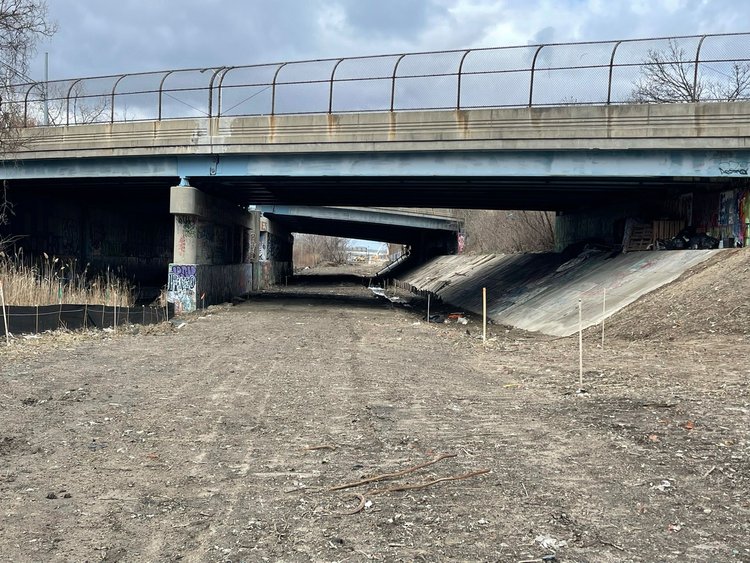
The Detroit Greenways Coalition (DGC) works to promote and build a network of greenways, Complete Streets, and bike lanes that will connect people and places, improve the quality of life, beautify neighborhoods, and stimulate neighborhood-level economic development in Detroit. Its mission is to create, conserve and promote greenways and green spaces to connect people, places, and nature. Its vision is a strong, healthy, vibrant City of Detroit and a region where a seamless network of greenways, green spaces, blueways, and Complete Streets are an integral part of people’s active lifestyles including day-to-day transportation and recreation. SBN Detroit spoke to DGC Executive Director Todd Scott to gain insights about their work. Q: How big of a driver was sustainability for the city of Detroit in the forming of the Greenways Coalition? A: In the beginning, we had to tackle more basic issues about how to build and maintain greenways across the entire city and how to make green transportation easier and safer. Our vision was certainly supporting sustainable transportation and green space, but we were focused initially on more basic issues. Some examples here are developing a citywide greenway network vision, advocating for redesigned city streets that better accommodate green transportation, and finding the resources to make this all a reality. Over time we’ve been able to move beyond these issues and push sustainability more, especially in light of the need for Climate Action – reducing transportation carbon emissions and providing green stormwater management. Q: The vision of the Greenways Coalition is ultimately to connect every neighborhood over time. Please speak to how this impacts the city in terms of sustainability from these aspects: Environmental: Greenways and Complete Streets (i.e. streets designed to safely accommodate all users) can do more than provide green transportation. They can help manage stormwater through green stormwater infrastructure, street trees, and even de-paving roads. They can also reduce urban heat island effects. Flooding and extreme heat are big issues in Detroit that our work can help address. Transportation/Mobility: The most important impact is how these connections help Detroiters use green transportation. That’s not just walking and biking, but public transit as well. They provide safe and convenient routes that connect schools, jobs, parks, retail areas, and more. Economic: There are many examples of greenways and Complete Streets driving economic urban revitalization around the world. Locally, there may be no better example than the Livernois Avenue of Fashion. The streetscape project reduced vehicle travel lanes (and speeding), widened sidewalks, and added bike lanes. Businesses along the route have flourished. There is a tremendous opportunity for additional retail revitalization along the 27-mile Joe Louis Greenway. It will be interesting to see how places like the Oakman/Grand River strip and even Downtown Hamtramck increase business activity as a result of the greenway and the bike and pedestrian traffic that it brings. Social/Inclusivity: Biking and walking can be very social. We’ve seen this with the numerous biking and walking clubs that have formed across the city over recent years, but especially during COVID. Greenways and Complete Streets support these club events that are open to everyone. Q: Does the Greenways Coalition have a set of sustainability goals? A: What we largely do is advocate for institutions to have sustainability goals. We’ve done that with the City of Detroit through their Sustainability Action Agenda. We’ve been heavily involved in the carbon neutrality discussion at the state level through the MI Healthy Climate Plan. We’ve even weighed in on federal issues, such as the recently proposed U.S. DOT Greenhouse Gas Emissions rule. You could say our agenda is to get sustainability incorporated at the institutional level so that it leverages the benefits of our vision. Q: From a sustainability standpoint what are the direct benefits the Greenways offer to Detroit residents? A: The largest direct sustainability benefit is transportation. Greenways provide “green ways” to get to destinations around the city and to connect with public transportation. The “green” in greenways has multiple meanings. It’s more than just landscaping, it’s about sustainable transportation. It’s also about saving some “green,” e.g. money. Sustainability can benefit Detroiters, but that benefit must also improve the financial sustainability of the household budget. Vehicle transportation can eat up a large portion of that budget. Greenways can benefit many and reduce that burden. Be sure to subscribe to our newsletter for regular updates on sustainable business practices in and around Detroit.
2030 Districts Network International Summit Held in Detroit
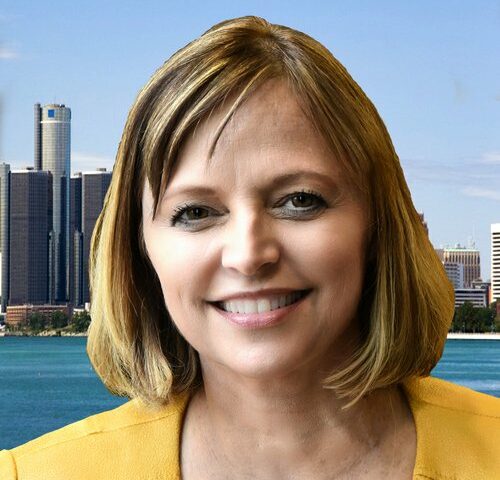
During Oct. 4-6, 2030 District directors and building owners, and members will convene for the 2030 Districts Network International Summit, which is being held for the first time in Detroit. The event focuses on sharing best practices in sustainability and the greening of buildings across the country and will also shine a bright spotlight on Detroit buildings and the many efforts in place to enhance sustainability in the city. “I’m really excited not only to meet with other District directors in person and get fresh perspectives and ideas but also to show off and share the work we’ve been doing to the world,” says Connie Lilley, director of the Detroit 2030 District. “I think there will be a level of pleasant surprise among our cohorts from around the country.” In addition to roundtables, presentations, and meetings to be held at Huntington Place, the largest LEED-certified venue in Michigan. The group will attend events and tours encompassing several key buildings, including the Renaissance Center, which is heavily involved in reducing carbon emissions; the Guardian Building, which is taking steps to reduce energy; the Central Mobility District and more. A welcome reception – which is open to the public – is being held at the Zero Net Energy Center to kick off the summit. The reception is expected to draw up to 250 people. The reception’s keynote speaker is Liesl Eichler Clark, director of the Michigan Department of Environment, Great Lakes and Energy (EGLE). We spoke to Liesl to get her insights on the summit, the 2030 Districts, and the work that’s being done in Detroit. Q: From your perspective, what is the importance of the 2030 Districts Network International Summit and the impact on the city of Detroit? A: The 2030 Districts network is a powerful catalyst across the globe in bringing local community and business leaders together to achieve ambitious climate and sustainability goals. Michigan is lucky to have three 2030 Districts in our state—Ann Arbor, Grand Rapids, and, of course, Detroit. Hosting the 2030 Districts Network International Summit in our state’s biggest city will increase awareness of the network and engage more Michiganders in this vital movement. It is also an opportunity to showcase the leadership and creative problem solving that has blossomed in Detroit and other Michigan cities and learn from peers from across the country and the world so we can put best practices into action here. The solutions being pioneered in Detroit and in other 2030 Districts, can serve as roadmaps for other communities to reduce their carbon pollution while providing good jobs and more vibrant, resilient neighborhoods. Q: What is the relevance of having it held in Detroit for the first time? A: Detroit has a proud and unique history. As home to the global auto industry, it boasts a strong manufacturing heritage. It is located in the heart of both the industrial Midwest and the Great Lakes Basin, which is home to roughly 20% of the Earth’s fresh surface water. Among U.S. cities with populations over 100,000, Detroit has one of the highest percentages of Black residents. It also has a large geographic footprint relative to its total population. For all these reasons, Detroit’s success as 2030 District can provide a powerful demonstration and proving ground for transitioning to carbon-free economy in a way that creates good jobs, advances justice and equity, improve air quality and public health, protects our water and other environmental assets, and builds vibrant places to live. Q: What are you looking forward getting out of the conference? A: I am looking forward to connecting with businesses and community leaders who are ready to double down on helping Michigan reach ambitious climate goals, namely, to reach carbon neutrality by 2050. In addition, we are always looking to beg, borrow, and steal good ideas from other states and places—particularly innovative solutions that others have already tested, refined, and perfected. So, in my networking at the summit, I will look for new partners and fresh approaches to our climate and sustainability work. Q: Overall how does the work of the 2030 Districts tie into your work? A: The work of 2030 Districts intersects with EGLE’s mission to protect Michigan’s environment and public health in too many ways to mention here. The most direct and obvious connection point is our climate and energy work. Shortly after taking office in 2019, Gov. Gretchen Whitmer created the State of Michigan’s first Office of Climate and Energy. The following fall she directed our department to develop the MI Healthy Climate Plan—our state’s plan to fulfill her commitment to transition the entire Michigan economy to carbon neutrality by 2050. As with 2030 Districts, the MI Healthy Climate Plan shines a spotlight on the ambitious interim targets we must hit this decade to reach our mid-century goals. And it, too, focuses on our built environment with “Repair and Decarbonize Homes and Businesses” serving as one of its six core pillars. More specifically, it calls for a 17% reduction in greenhouse gas emissions from the built environment by 2030 (as well as an increase in clean electricity generation to 60% in that timeframe). As director of EGLE and the chair of the Council on Climate Solutions, which helped us draft the plan, I know that action at the community level and in the private sector will drive decarbonization, alongside policy change and funding from the state and federal governments. That’s why EGLE has worked closely to support 2030 Districts through our State Energy Office grant programs and event sponsorships. Additionally, through EGLE’s Catalyst Communities program, we’ve engaged directly with Michigan’s 2030 Districts and seen firsthand the innovative solutions they have developed and the unique challenges they face. Q: What excites you the most regarding the work the 2030 Districts-Detroit is doing? A: To reach our climate goals we need to prioritize near-term progress and we need to leverage the resources of the private sector to create real action at the local level. The 2030 Districts-Detroit is doing all
How Does Meijer, One of the U.S.’s Largest Private Companies, Approach Sustainability?
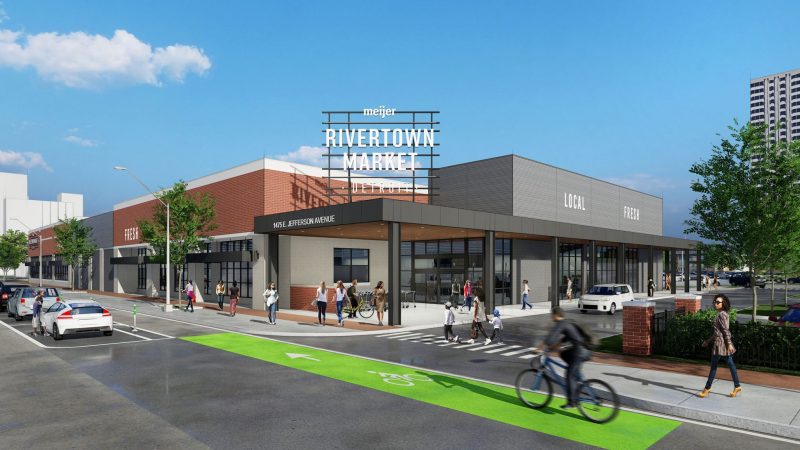
SBN Detroit interviews Erik Petrovskis, Director of Environmental Compliance and Sustainability for Meijer, the Michigan-based retailer with more than 250 stores and 70,000 employees in six states throughout the Midwest. The company ranks 13th on Forbes’ 2021 Largest Private Companies list. Petrovskis leads environmental management across Meijer, including remediation, due diligence, and multimedia compliance programs, and represents the company’s position on regulatory matters. Here he shares some of the efforts, challenges, and goals that are in place, and the opening of the Q: Meijer has a goal of reducing 50% of absolute carbon emissions by 2025 – Can you elaborate and share what actionable items you are working on toward that? A: Meijer set a goal to reduce our absolute carbon emissions by 50 percent by 2025. This reduction represents the emissions over which Meijer has operational control and includes things like our fuel, electricity, natural gas, and refrigerant usage. We have many ongoing projects to reach the reduction goal, including energy efficiency improvements, refrigerant leak detection systems, and fuel efficiency strategies for our fleet. Our virtual power purchase agreements (VPPAs) for two renewable energy fields will also support reaching a 50 percent reduction. Q: Tell us about Meijer’s investment in the Texas-based Lacy Creek Wind Energy Center and how it pertains to Meijer’s carbon emission reduction goals. A: Our investment is structured as a virtual power purchase agreement (VPPA). In this agreement, Meijer commits to purchasing much of the energy generated from the wind farm and receives renewable energy credits (RECs). This project is coupled with the Pisgah Ridge Solar project, which utilizes the same type of agreement. The RECs certify our purchase of renewable energy and therefore represent a reduction in overall carbon emissions from the energy we purchase. Q: When did Meijer initiate sustainability practices? A: Meijer was an early adopter of green initiatives. Fred Meijer, who led the company for more than 40 years, vowed to “Leave the world in a little better shape than when I entered it.” In fact, Fred Meijer spoke at the first Grand Rapids Earth Day celebration in 1970, and company-wide recycling, energy, and waste reduction programs were in place by 1973. Since then, we’ve undertaken many sustainability-related projects, like our plastic bag recycling drop-off, installing EV chargers at select stores, and sourcing responsible seafood. Among others, these efforts became formalized when Meijer established its first sustainability plan in 2014. At Meijer, we understand that to be a good company, we must be a good neighbor. We integrate environmental sustainability into our daily operations, not only because it makes good business sense, but because it aligns with our values and mission of enriching lives in the communities we serve. Our sustainability program has evolved to prioritize four pillars: carbon emissions reduction, food waste reduction, circular economy, and Great Lakes Stewardship. Q: Regarding the Detroit Rivertown location in Lafayette Park, what community partnerships have been put in place since opening? A: Since the store opened in 2021, Meijer has supported more than 20 community organizations, including Junior Achievement of Southeastern Michigan, Bees in the D, The Better Detroit Youth Movement, Pure Heart Foundation, and Greening of Detroit. Q: Are there any other sustainability efforts that are unique to the Rivertown location? A: The Rivertown Market includes electric vehicle charging as an amenity to our customers. This is part of our greater network of EV chargers, which includes more than 70 stores in our footprint. Rivertown Market will also participate in our Gutter Bin pilot program, which is part of our Great Lakes Stewardship efforts. The Gutter Bins will catch garbage and other debris from our parking lots before it enters the waterways. The Council for the Great Lakes Region will coordinate metric tracking and evaluation of the initiative, which is occurring across nine Meijer stores. Q: How does this location and Meijer overall deal with food waste? A: Meijer aims to keep food waste out of landfills. This begins with our ordering process, in which we optimize the quantities ordered to reduce overstock. However, we also have partnered with several organizations to find other solutions. For example, we work with Feeding America, and their network of food banks across our footprint, on our Food Rescue program to provide food nearing its sell-by date to those in need. In 2021, we donated 13.7 million pounds of food through this program. We also rolled out Flashfood program, which acts as a virtual clearance rack for food nearing its sell-by date. This program is not currently available at Rivertown Market but has already diverted more than 1 million pounds of food from potentially entering landfills. Also, any food that can no longer be consumed, including things like food scraps and rotten produce, is picked up from our stores, distribution centers, and manufacturing facilities by third-party vendors, who process the waste into animal feed and compost. Q: What are your biggest challenges when it comes to reaching your sustainability goals? A: We’re lucky to have had strong support both internally and externally regarding our sustainability goals. However, one initial challenge with ours was leading a cohesive path forward. The formation of our Sustainability Council united the company and allowed sustainability to move out across all functions of the business. The Sustainability Council, which is made up of representatives from across the company’s business areas, has served as a powerful mechanism in moving our efforts forward and achieving goals with strong cross-functional collaboration. Q: From your perspective, what is the role of businesses in Detroit in terms of sustainability overall for the city? A: Business plays a key role in sustainability on a global scale. Specifically in Detroit, a focus on business sustainability is essential for the city’s renaissance to be successful and enduring. Meijer is grateful to have the opportunity to support the city’s revival, taking both environmental and social sustainability into account. Q: What businesses and partners and vendors are you working with in Detroit who are doing it well? A: Meijer features
Detroit Sustainability Action Agenda Framework
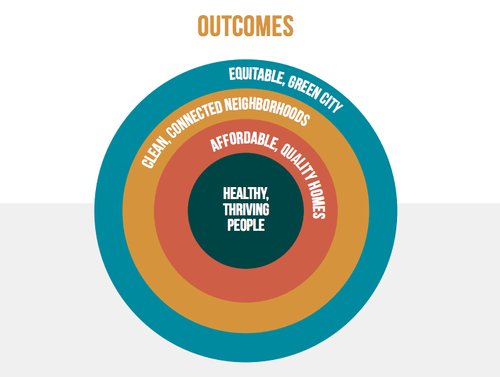
In June 2019, the City of Detroit’s Office of Sustainability published the city’s first Sustainability Action Agenda, a strategic roadmap to create a more sustainable city. In order to develop the agenda, a full year was spent engaging with 6,800 Detroiters to understand their vision for a more equitable, prosperous, and environmentally sustainable city. The city hired 14 sustainability ambassadors, created a Sustainability Advisory Commission, convened an interdepartmental working group of 29 city departments, distributed online and in-person surveys in five languages, and used the coUrbanize digital platform to reach Detroiters online. This engagement helped to define four desired outcomes: Healthy Thriving People Affordable Quality Homes Clean, Connected Neighborhoods An Equitable Green City Across these four outcomes, the city is committed to achieving ten goals and implementing 43 actions collectively called the Detroit Sustainability Action Agenda Framework outlined below. Teams have been working over the past two years toward these goals, and recently the city was listed as #31 of 50 of the greenest cities in the U.S. Amid several challenges and roadblocks, the city teams have worked diligently toward the action items and goals for the past two years. You can view a two-year progress update to read more about the work that’s been done and the success stories. DETROIT SUSTAINABILITY ACTION AGENDA FRAMEWORK FOR HEALTHY THRIVING PEOPLE: Goals & Actions: Increase access to healthy food, green spaces, and recreation opportunities 1. Provide nutrition and environmental education at recreation centers and parks 2. Create local food purchasing guidelines for city-funded programs 3. Improve access to high quality, healthy food at grocery stores 4. Renovate existing and create new parks throughout the city 5. Expand sports recreation opportunities for youth Improve air quality and reduce exposure to pollution 6. Expand local air quality monitoring system 7. Create citywide truck routing network 8. Increase tree plantings in vulnerable areas 9. Reduce emissions from city vehicles Advance equity in access to economic opportunity 10. Expand green jobs training and workforce development programs 11. Prepare Detroit residents for city employment opportunities 12. Launch a digital inclusion program 13. Expand wireless internet access on city buses 14. Launch a diversity, equity, and inclusion initiative AFFORDABLE QUALITY HOMES Goals & Actions: Reduce the total costs of housing, including utilities 15. Improve access to utility efficiency programs 16. Expand home plumbing repair programs 17. Implement and expand upon the Blue Ribbon Panel’s water affordability recommendations 18. Establish affordable housing preservation goals for building owners receiving city incentives 19. Increase access to information on existing affordable housing Improve the health and safety of existing and new housing 20. Expand lead poisoning prevention initiatives across the city 21. Create a residential lead abatement training pilot program 22. Develop green building guidelines for new developments receiving city incentives CLEAN CONNECTED NEIGHBORHOODS Transform vacant lots and structures into safe, productive, sustainable spaces 23. Improve processes to purchase city-owned vacant lots 24. Support neighborhood-based efforts to care for vacant lots and structures 25. Develop a fee structure and associated rules for irrigation-only water accounts Reduce waste sent to landfills 26. Launch a citywide recycling campaign 27. Expand curbside recycling to multifamily buildings 28. Expand recycling to public spaces and all city facilities 29. Develop a best practices framework for commercial-scale compost operations 30. Launch residential composting pilot program Make it easier and safer to get around Detroit without a personal vehicle 31. Improve mobility connections between neighborhoods and job centers 32. Implement safety measures to reduce crash severity 33. Expand Detroit’s protected bike lane network EQUITABLE GREEN CITY Enhance infrastructure and operations to improve resilience to climate impacts 34. Create neighborhood scale, distributed green infrastructure projects 35. Incorporate green stormwater infrastructure into street redesign and greenway projects 36. Integrate climate change impacts into hazard mitigation planning 37. Improve resident access to sustainability-related city services 38. Expand emergency preparedness and communication tools Reduce municipal and citywide greenhouse gas emissions 39. Develop a greenhouse gas assessment and climate action strategy 40. Increase the adoption of solar photovoltaic technologies 41. Enhance energy and water efficiency at city-owned facilities 42. Launch Mayors’ Challenge Program for commercial buildings 43. Develop an electric vehicle infrastructure strategy Be sure to subscribe to our newsletter for regular updates on sustainable business practices in and around Detroit.
ROSSETTI Architecture Shares On its Sustainability Practices
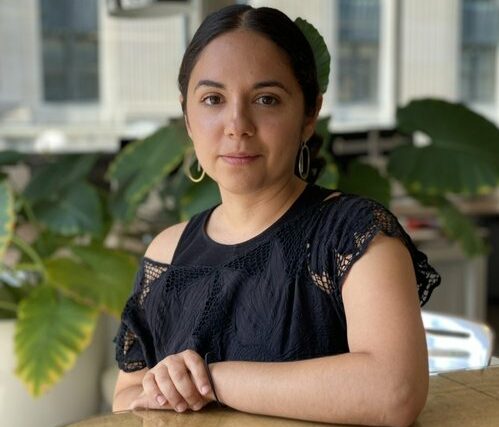
SBN Detroit spoke with Paulina Reyes, a registered architect, and designer at ROSSETTI who leads the ROSSETTI Sustainability Lab. In addition to her current role at ROSSETTI, Reyes possesses a dedicated background in design-based research, community outreach, and the development of pedagogical efforts connecting cultural programming with the tools of architecture and urbanism. She acted as Project Designer-Manager for Estudio Teddy Cruz + Fonna Forman, leading architectural and urban projects across the US-Mexico border, including fieldwork, and cross-border internship programming. Sustainability has remained a focus of her work as a previous Design Fellow with the University of Michigan and Fulbright recipient in which she developed research on water sustainability in the context of self-governance and low-income public housing in Mexico City. The ROSSETTI Sustainability Action Plan calls for embracing and integrating sustainability practices in every facet of their work, believing that prioritizing sustainability is not just a mantra; it offers a vision forward in a rapidly changing world as a means to educate, innovate, and push their work farther than ever before. Q: Please share the sustainability practices and work ROSSETTI has in place. A: Sustainability has been a feature of our work for some time. We have several past LEED projects that demonstrate the impact of sustainable design. Louis Armstrong Stadium, for example, is the world’s first naturally ventilated stadium, certified as LEED Silver, and it also won the AIA Detroit Building Award with recognition for sustainability. The UCLA Health Training Center, the training facility for the Los Angeles Lakers, achieved LEED Platinum through innovative use of solar mitigation strategies, including vertical shading that doubles as signage and a PV solar array that reduces energy consumption by 30%. The particular inflection of sustainability through sports work is an interesting one, as sports projects by nature are large civic projects that reach huge numbers of people, and hinge specifically on supporting the performance of elite athletes, their health, and well-being. At ROSSETTI, we are interested in furthering this connection with sports and sustainability in addition to our work at large. Q: What are your short-term and long-term goals when it comes to sustainability? A: One short-term goal is to simply shift awareness and culture around environmental impact. Even just being conversant in the basic tenets of sustainability can help designers and clients alike think differently about our approach and how we define value for a project. Like many others, we have long-term goals to address and reduce emissions in a big way. Most of our clients these days have ambitious goals and mission statements around reducing or even eliminating emissions within the next few decades. Given that this is easily within the lifespan of our projects, this requires that we address emissions (both operational and embodied) as drivers in our design process from the beginning. GHG (greenhouse gas) emissions are the primary source of global climate change and present an easily quantifiable metric for benchmarking and evaluating success. I would like to see ROSSETTI’s projects take on the challenge of benchmarking, measuring, and reducing emissions in all of our projects moving forward. Q: What is the Sustainability Lab? A: Initially launched in March 2021, the ROSSETTI Sustainability Lab is represented by an interdisciplinary array of staff members from across our office, from design to marketing to project management. We meet on a biweekly basis to discuss ongoing initiatives, and outreach to others in the field. A core group of our members works on advancing various sustainability efforts in the office. We also have a lively Zoom group chat! Q: How do your sustainability practices come into play when choosing vendors? A: We prefer to work with vendors that prioritize sustainability in their products. We work with reps like Susan Hall (Eco Surroundings) who only represent sustainable materials like Plyboo, Durat, Baux, DuraPalm, and more. Luckily, a lot of industries, particularly for interior finishes like carpet or porcelain tile are already headed in that direction. We are consistently meeting with vendors to see what’s new and identify projects that can support our client’s sustainability goals, including LEED certification. Q: What about material choices? A: As a principle, we look to specify materials that are responsible, durable, and locally sourced. Some examples include Interface Carpet, Unika Vaev (acoustic materials), and Fireclay, which is made in the USA with zero waste and mindful manufacturing. We also work with Haworth, who does a lot of recycling/reuse of material and recently earned zero waste to landfill status and just launched a more rapidly biodegradable textile. We try to avoid materials that off-gas or contain harmful chemicals like VOCs (volatile organic compounds), including epoxy or vinyl. Specifying more sustainable materials can also support other goals for clients, for example, more durable finishes or furniture that don’t need replacement as often, or local materials which reduce lead time. Q: Beyond vendors and material choices – what else do you look at? A: When it comes to materials, whether interior finishes or building structure, embodied carbon is also an extremely important metric and one which we are looking more into. There currently exist many avenues for measuring embodied carbon, software like EC3 or Tally, or environmental product declarations (EPDs) for specific products or industries. Beyond that, water use, energy use, and waste production are also key metrics for evaluating the sustainability of our projects. Q: ROSSETTI believes that sustainability is key to client success – please elaborate. A: Sustainability, beyond being a social imperative, is quite simply put, good for business. Sustainable buildings offer a host of financial benefits to clients: operational savings, higher sale or rental value, lower asset risk, and insurance premiums. To give an example, the PV solar array installed on the LEED Platinum Los Angeles Lakers practice facility not only offsets 12.6 million pounds of carbon dioxide annually but saves the Lakers $38,000 a year in operational costs. There is also obviously a broader value proposition to sustainability that includes human health and well-being, community value, and experiential opportunities to
Pingree Detroit, a Small Business, Laser Focused on the Sustainable Well Being of All Living Things

SBN Detroit spoke with Jarret Alan Schlaff, Pingree Detroit & Pingree Mfg L3C co-founder and CEO. Since 2007, Schlaff has launched four separate nonprofit projects and organizations currently making an impact in the youth mentorship, environmental justice, and food access arenas across Metro Detroit. He has 10 years of experience in management and personal, professional, and organizational development. Schlaff was named a Global Leadership Fellow by the Hesselbein Leadership Institute in 2010, Campus 2 Congress Fellow with the Bard Center for Environmental Policy in 2012, was one of 90 leaders selected from across the U.S. as a 2015 Young American Leadership Fellow with Harvard Business School, named an Emerging Leader by the Detroit Regional Chamber in 2015, was a finalist at the 2016 Detroit Regional Chamber Entrepreneurship Pitch Detroit competition, and was named a WXYZ-TV 20/20 Detroit Person of the week in November 2017. Pingree Detroit was awarded the Social Impact award for Sustainability and Standards by Gingras Global in 2018 and 2019. Schlaff shares with us here Pingree’s sustainability mission and practices. Q: What is Pingree Detroit? A: Pingree Detroit, founded in 2015, is a worker-owned (there are nine of us), triple bottom line design and manufacturing cooperative that hand-makes footwear and home, pet, and fashion accessories in Detroit with leather, seat belts, airbags, and other materials upcycled from the auto industry. Our purpose is to bring forth solutions for footwear, accessories, and goods that maximize the well-being of our customers, team, community, and our environment. To accelerate the global shift towards a restorative, equitable, just economy, we move every day to create resilient products that are not derived from fossil fuels or that are carbon negative. All our processes are non-toxic. We upcycle leather and other materials otherwise destined for the landfill. The majority of our equipment and materials are sourced from the USA. All shipping materials we use are 100% recycled and compostable. Q: Please share what work is being done at Pingree toward sustainability. A: We are looking to reimagine what the future looks like in terms of maximizing the well-being really of all living things and to us, that includes seven generations from now. We pay a living wage to our makers, use quality materials otherwise destined for the landfill, and are working hard to eliminate all harmful chemicals and climate change-causing emissions from the entire life-cycle of our production and distribution processes. “ We look at the entire ecosystem input through output and beyond, asking ourselves, where does this material come from, what does it take to make this piece of steel that’s going into one of our bags, etc. By 2025 we are committed to Designing products so that we can source the majority of materials from the Great Lakes Region, have zero carbon emissions, and offer military-grade, fossil-free plant-based alternatives to leather and plastic. In short form, we’ve set the following goals to reach by 2025: Waste-free Toxic free Carbon negative Offer products made from plant-based alternatives to leather and plastic Source majority of materials from the Great Lakes Region Q: How will you reach these goals? A: Looking at the breakdown of these commitments we know it’s ambitious for our small team of nine. Conversely, being a small team allows us to be nimble. We can test out small runs of plant-based materials for our pet collars, etc. Sourcing materials from mainly the great lakes region is really difficult. For example, there are only a few companies that make zippers and Velcro. But we also see that as an opportunity to support Midwest businesses. We also urge our suppliers to push the curve for standards of measuring and offsetting. We’ve partnered with the auto industry to use reclaimed and underutilized materials from their production process. Now, with 3-D printing and 3-D knitting, we are hoping to be able to bring production and supply channels closer to home. When it comes to our carbon-neutral goals, we work to offset the footprint with renewable energy at our workshops. We participate in tree planting and reforesting efforts. Every product bought is offset in production and shipping. Q: What drives your passion? A: Humanity’s current addiction to growth-at-all-costs economic system is threatening our collective home and leaves too many people behind. We are called to do something about it. I truly believe that anything is possible, and I’m committed to being a part of bringing forth ideas whose time has come. I’m motivated and driven by the idea of a future that works for all. Q: What are your biggest challenges? A: Trying to equally balance profit with maximizing well-being and our multiple layers of commitment. We are small and we are self-funded so finances are always an issue. We literally started with $15,000 of my own money seven years ago. Sustainable materials can cost up to seven times the amount of materials made from plastics. Q: From your perspective, what is the role of businesses in Detroit in terms of sustainability overall for the city? A: There is amazing work happening where folks are prioritizing sustainable alternatives. I think businesses have a role to lead by example and offer alternatives for people to participate in. I think recognizing the people behind the products is important. Understanding how it’s made, why it’s made, and where it’s made gives people more of a context for the things they purchase. We also share the name of the maker of every product. From our $9.99 pet leash to our $21 coasters to our $330 leather sneakers that took 2.5 days for a person to single-handedly put together … connecting with the maker changes the way people think and use our products. Q: What businesses and partners can you point to that are doing it well? A: Detroit Denim, Rebel Nell, ISAIC (Industrial Sewing and Innovation Center), and Carhartt. Also, one example of a partner we are working with is AutoLiv seatbelts – they are diverting waste and offering sustainable alternatives. Be sure to subscribe to our newsletter for regular updates
Tracy Reese Returns to Detroit to Train Local Craftsmen and Produce For a Global Sustainable Footprint
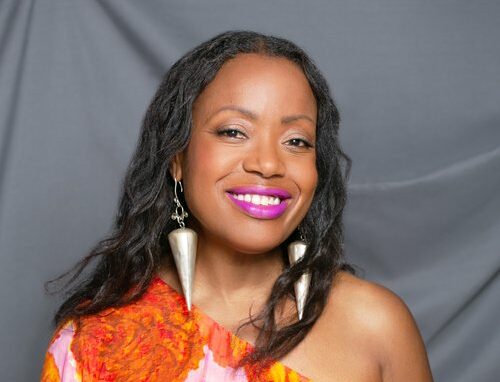
SBN Detroit spoke with Tracy Reese, an American fashion designer who has been featured in fashion publications that include Vogue, Elle, Glamour, InStyle, and O, The Oprah Magazine; and whose creations have been worn by Michelle Obama, Sarah Jessica Parker, and Taylor Swift. In 2018, after 30 years in the industry, Reese moved back to her hometown of Detroit and in 2019 launched Hope for Flowers by Tracy Reese. The collection is designed and produced following three guiding principles of sustainability: the health of people, the planet, and equity in profit. Reese serves on the board of directors of the Council of Fashion Designers of America (CFDA), where she has been a member since 1990. Reese also serves on the board of trustees of Nest Artisan Guild and the advisory council of the College for Creative Studies Fashion Accessories Design Program. She is also part of Turnaround Arts, a Kennedy Center program that transforms schools through the strategic use of arts. She recently served as board president of ISAIC, the Industrial Sewing and Innovation Center. She is working to build an artisan studio in Detroit creating economic opportunities for women in underserved communities. Q: Please share how Hope for Flowers and the sustainability aspect came about.A: In 2017, I had three labels and had been working in the industry for more than 30 years with my own brand, functioning as a typical manufacturing wholesaler. All of my production was overseas, and I sourced fabrics from all over the world. I started learning more about sustainability, and around that time, the CFDA + Lexus Fashion* Initiative that focuses on sustainability launched. I missed the deadline to apply in 2017 and was determined to apply the following year, so I did, and I was selected. It was an eye-opener. It was nine months of learning about everything from textiles to carbon footprint to human rights issues within the supply chain to waste in pattern making and more. At the end of the program, we were required to present a blueprint to be judged, and then to follow through with the blueprint. During this time, I started feeling a pull back toward Detroit and bought a house. I was trying to determine how I could be back in the city more. As I created this blueprint, I realized that Detroit was the perfect place to launch a brand. I started changing my perspective on how I was working. Running parallel to this was an impending departure of ways with my partners. There were things we didn’t see eye to eye on that were nonnegotiables for me. They wanted to go for volume, and I wanted to do something smaller and more meaningful and work on giving back to the community. So, I took the blueprint and headed to Detroit. Part of my blueprint included localized production, so training Detroiters to be part of this industry in a meaningful way was a natural next step. I set up a business model with a social and sustainability-focused mission. I worked with Shayla Johnson from Scarlet Crane Creations and interns from Cass Tech, my alma mater. We manufactured in Flint. This set the groundwork for Hope for Flowers. Q: Do you have a set of short-term and longer-term goals you are working toward as you grow Hope for Flowers? A: My short-term goal was and is to address the low-hanging fruit – textiles. Every product we work with falls into the mild zone. We are using bast fibers like linen – a crop that doesn’t require lots of water and doesn’t deplete the earth of nutrients. We also use organic cotton and responsibly forested wood byproduct fibers like Tencel and are experimenting with recycled wool and other fabrics. The idea is to create garments that stand the test of time yet biodegrade over the long haul. We look at biodegradable materials for buttons like natural shells or wood and try to use natural things found on the planet versus man-made We also try to design clothes that are flexible, meaning two different sizes can wear the same garment. This reduces overproduction My long-term goal is to produce in Detroit. To that end, we are training and working with local craftspeople and sewers to develop them to a stage of mastery that’s competitive with what we can import. We are launching an apprenticeship program, and our goal is to start running small-batch production in-house. Q: What impact do you think Hope for Flowers and the vendors and partners you work with are having? A: Each one of us is proving it’s possible, and I think that makes an impression on anyone considering taking steps toward sustainability. When those in doubt see a successful business model that’s working and financially viable, that’s impactful. The more people who choose to work this way, the easier and less expensive it becomes, and we can speak collectively. We need everybody to get on board, so it’s about setting aside the competitive mindset and working as a unified industry. Q: What drives your passion when it comes to the brand and its deep commitment to sustainability? A: I don’t see that it’s a choice really – it’s a necessity. We need to work in a way that’s less harmful to the planet and people. It’s also about holding ourselves to a higher standard, accepting the challenge and being energized by it. The idea of trying to solve this is exciting and I want to be up for the challenge, continue to learn, and continue to grow. Q: From your perspective – what is the role of businesses in Detroit in terms of sustainability? A: Each business has its own role to play. Getting started doesn’t have to be complicated. There are simple internal things that – when built into the company philosophy – begin to embed new habits and practices in the employees. We started composting a few months ago, and we are all working on developing new habits. Understanding
Wildlife Habitat Council Hosts its First Conference in Detroit 2022
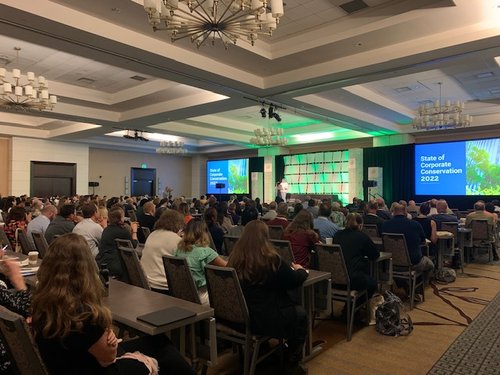
On June 14 and 15, 2022 business leaders from all over the world convened at the Westin Book Cadillac to celebrate each other’s successes in conservation and biodiversity. Hosted by the Wildlife Habitat Council, this 33rd annual conference took place in Detroit for the first time. Says WHC President Margaret O’Gorman, “We chose Detroit because we work with many businesses in and around the city that are not only innovative from a business sense, but from a corporate social responsibility standpoint. These companies engage in a meaningful way with conservation and are forward-thinking when it comes to biodiversity. We celebrate that.” What is the Wildlife Habitat Council? The WHC’s mission is to promote and certify habitat conservation and management on corporate lands through partnerships and education through customized comprehensive services that help companies align conservation efforts with their business needs. It works with private-sector businesses of all sizes and landscapes of all types… from buildings like the Renaissance Center to the Marathon Refinery to a quarry or copper mine. Its goal is to integrate nature into business operations to benefit community engagement and biodiversity. When we are asked how businesses can get started, our answer is simply ‘do something.’ Our philosophy is that every act of conservation matters,” O’Gorman said. “We don’t need large tracts of land to make a positive impact. What we need is for companies to simply act for nature. That’s where the difference starts. Says Neil Hawkins, president of the Erb Family Foundation, former chief sustainability officer of Dow, and friend of the WHC, “This organization does a fantastic job of coaching companies both big and small and also assisting in doing the work.” About the WHC Conservation Conference This ‘comeback’ event – having been on a pandemic hiatus the last two years – was designed to bring companies together to celebrate accomplishments in conservation, share ideas, and shape strategies that can make a positive difference for biodiversity and business around the world. Says O’Gorman, “There were two main goals of this event. The first was to simply highlight that there is a biodiversity crisis and that the private sector has a role to play in addressing it. The second was to provide recognition for corporate employees who are implementing high-quality projects on their land.” As such, General Motors received the 2022 WHC Corporation Conservation Leadership Award, which recognizes one company’s overall excellence in conservation and signifies its exemplary commitment to biodiversity, conservation education, and alignment with global conservation objectives. This year’s Employee Engagement Award was also given to General Motors. This award recognizes the exceptional contributions of a company’s employees to their habitat and conservation education activities. Several other prestigious awards were presented. You can see the full list here. A unique addition to this year’s conference was the Makers’ Pavilion, sponsored by the Erb Family Foundation and Sustainable Business Network Detroit, in which ten Detroit-area socially and environmentally focused artisans displayed and sold their work. “This points to WHC’s focus on not only conservation projects, but social sustainability, inclusion, and equity,” said Hawkins. What it Represents for Detroit Many Detroit businesses are active with and involved in conservancy projects with the WHC. Detroit and its neighboring regions are home to 32% of WHC members. The event – typically on the East Coast – being held in Detroit this year was significant. I see this as such a great opportunity for Detroit. Hosting the WHC and companies across the globe in acknowledgment of the smart and hard conservation work being done toward biodiversity opens doors and eyes for other businesses in our area to follow suit, Hawkins shared. “Detroit city land has a long history of being taken over for industrial development and residential housing and conversely, decimating nature. Whatever we can bring back through corporate intervention is important.” WHC Work in Detroit Detroit, like most major U.S. cities, faces modern problems such as poor air and water quality, unemployment, and degraded environmental conditions resulting from rapid urbanization. Detroit companies, dedicated community groups, and the WHC are working together to combat these issues and find solutions. The local work highlighted at the conference richly illustrates this. Lionel Bradford, president of Greening Detroit, highlighted its Meyers Nursery Stormwater Retention Pond, installed at Rouge Park and designed to catch 11 acres of runoff from the site, plus hold back water equivalent to two back-to-back 100-year storms. Another substantial project featured was the Stellantis Community Environmental Engagement Program. With its $1.6 billion construction of the Mack Assembly Plant just east of the city, Stellantis committed to a multi-layer environmental program with assistance and certification from the WHC to improve air quality, reduce stormwater, support wildlife, provide educational opportunities and collaborate with community organizations. As part of this program, over 1,000 trees were planted as a green buffer; 100 rain barrels were provided to residents to save water and reduce water runoff; curriculum and programming through the WHC were delivered to local schools, and significant environmental installations were developed at nearby Chandler Park. A collaborative program between Friends of the River Rouge and The Sierra Club called the Rain Gardens to the Rescue Program was presented, whereby 80 rain gardens were installed in homes to reduce stormwater runoff. This organically led to residents becoming much more involved – to the extent of some purchasing nearby lots to create additional rain gardens and community gathering spots. Said O’Gorman, “The number of corporations intersecting with biodiversity shows that the spirit of conservation is alive and well in 2022. We celebrate the work being done because when nature is healthy and our ecosystem is restored, everything flows from there.” Be sure to subscribe to our newsletter for regular updates on sustainable business practices in and around Detroit.
Actionable Sustainability Initiatives for Businesses from Detroit’s First Director of Sustainability

Joel Howrani Heeres, Detroit’s former, first, sustainability director, shared his thoughts about tangible initiatives businesses can integrate to work toward a cleaner environment. In his role, Howrani Heeres provides strategic leadership, tactical guidance, and technical skills to drive triple bottom line (environment, equity, & economics) strategy and actions to help Detroiters improve their lives by creating a healthier, greener, more vibrant city for all. Under Howrani Heere’s leadership, the Office of Sustainability had over 6,800 interactions with Detroiters and fostered partnerships with neighborhoods, businesses, and philanthropic and non-governmental organizations working to make Detroit more equitable, economically thriving, and environmentally healthy. Before taking this position, Howrani Heeres led sustainability and climate action planning at EcoWorks and served as managing director of the Southeast Michigan Regional Energy Office for DTE Energy. We asked him to share some steps that businesses can take to reduce energy and water usage as well as ensure residents are not experiencing impacts from climate and climate change. Track energy and water usage You manage what you measure, so start measuring. Data shows that once you begin tracking usage you’ll begin saving 3% in energy costs. A good opportunity for businesses to begin measuring and reducing energy waste is to join the Detroit Energy Challenge. This was launched in collaboration with the Detroit 2030 District and Michigan Battle of the Buildings, and it’s a free and friendly competition. Conduct an energy audit Doing a walk-through with an expert to point out things that can be done to save energy is invaluable. Within the city, we’ve conducted these audits now on 155 buildings and identified conservation measures that we are implementing. There are several audit programs available, such as DTE’s Business Energy Consultation. Update lighting A low-hanging fruit initiative is to update to LED. The cost to do so is coming down, and the cost of electricity is rising, so this is a win/win. Integrate renewables Integrating renewable or solar energy is a great action to take, especially if the electrical load is high. Companies can get a 26% tax credit for investing in solar. Check out the Detroit Solar Toolkit to identify your building’s solar potential. Join the global Race to Zero campaign Race To Zero participants are committed to achieving net-zero carbon emissions by 2050 at the latest. The city of Detroit has joined the campaign. Race to Zero’s intent is to rally leadership and support from businesses, cities, regions, and investors for a healthy, resilient, zero-carbon recovery that prevents future threats, creates decent jobs, and unlocks inclusive, sustainable growth. Electrification To get to net zero we must also think about electrification. We know we can clean the grid and introduce renewables, but we cannot clean natural gas. When you consider the cost of maintenance, gas, and parts on a gas-run vehicle, the total cost of electric vehicle ownership makes sense economically as well as environmentally. DTE offers a Charging Forward rebate program, so it pays to be an early adopter. Make investments in climate resilience We all remember last year’s flood event, and climate projections tell us that we’ll continue to see more and more extreme storms. Installing things such as backflow preventers, sump pumps, and generators are great considerations. Engage with neighbors Being a good corporate citizen and good neighbor reaps great benefits. I think businesses should talk to their communities and ask what things would make the neighborhood better. Also, look around at the land you own. Plant trees. Invest in biodiversity. Interested in getting assistance in setting up a sustainability program? Howrani Heeres points to DTE as a resource and also B Corp certification, a designation that a business is meeting high standards of social and environmental performance. Be sure to subscribe to our newsletter for regular updates on sustainable business practices in and around Detroit.
